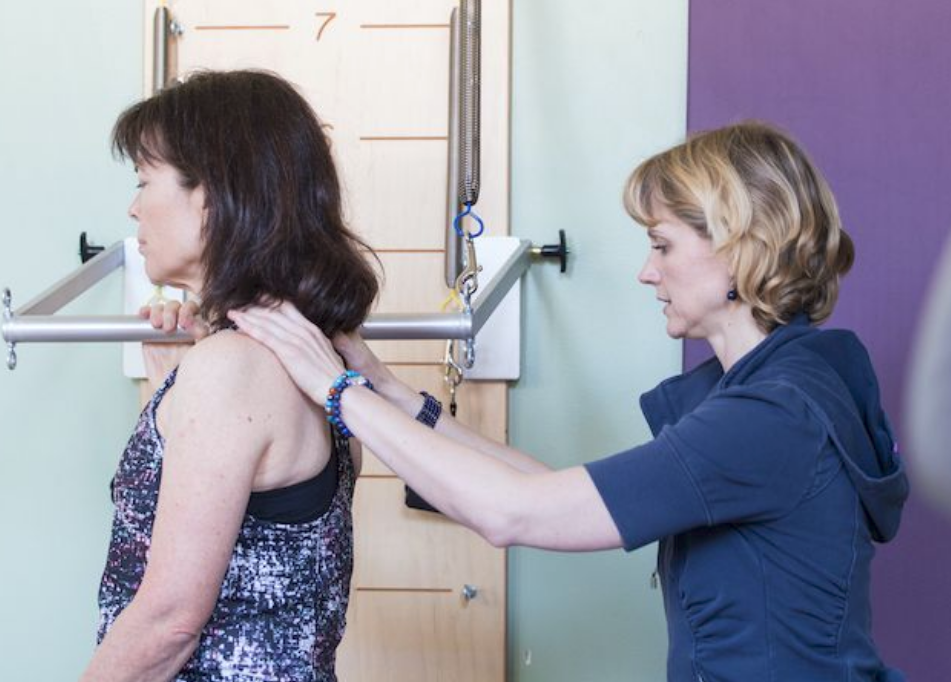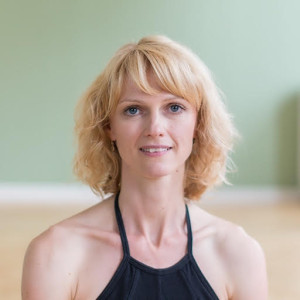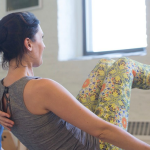Issue #304 – Wednesday June 10, 2020
Ingredients of a Perfect Pilates Practice
by Mara Sievers
What comes to mind when you think of having a perfect Pilates practice? What’s the epitome of Pilates for you? Go ahead, close your eyes for a few seconds, and think of the first three words or phrases that pop into your head. I’ll be here when you’ve got them.
Great. Thanks for playing along.
Were these words among the ones you thought of? Strong, elegant, effortless, flexible, powerful. Maybe certain advanced exercises came to mind like Snake, Twist, Teaser, Dolphin, Parakeet, Swan Dive, or Rocking.
What does “perfect practice” even mean?
Does it mean giving your all? All your energy, all your focus, all your strength?
Does it mean doing every exercise perfectly?
If you can’t do an advanced exercise that you admired on Instagram, does that mean that your practice was not perfect? Is it only perfect if you do the hardest “tricks”?
Beginners of Pilates often think they need a strong core and flexible hamstrings or they need to be “double-jointed” to do Pilates perfectly. Isn’t it crazy that people apologize for not being flexible or strong or coordinated? Maybe they use it as an excuse or maybe they are truly intimidated by what they see represented as Pilates on the web. (Why do we always show off the hardest exercises on our Instagram feeds?) Do we all need to be dancers to do Pilates? No, we don’t. But many uninitiated Pilates folks think they do.
Willingness To Change
I want to argue that we need the willingness to do things differently much more than we need certain physical attributes. If your student is not willing to change a certain movement, no cue in the world will get her to do it. She needs a reason she can relate to.
Curiosity
There is a big fear going around in the Pilates world about doing an exercise incorrectly. Curiosity is an ingredient that allows us to be non-judgmental about how we move instead of criticizing or censoring our movement.
“I wonder why this variation is easier than that one.”
“I wonder what happens if I decrease or increase the spring tension. Is there a law that says you have to use certain springs?”
I encourage you to be curious (but safe). It’s amazing what you learn about Pilates and yourself by drawing outside the lines. Curiosity also keeps me present in the moment.
Relativity
Pilates is unique in the vast realm of fitness methods in that it’s never about absolutes. Never about copying a shape. Never about what it looks like but always about what it feels like. In this regard, it’s the direct opposite of dance or gymnastics. It’s all relative to ourselves. Who cares what the person next to you on the mat does? Focus on yourself.
I encourage you to let go of all absolutes in Pilates, such as …
… counting the number of repetitions,
… being attached to the color or number of your springs,
… judging yourself whether you can reach your toes or not,
… if you can make it to 100 today or you take a break at 80.
Patience
Lastly, everyone’s least favorite, is patience. Yes, it does take repeated effort to build strength, mobility, and endurance. Unfortunately, taking shortcuts will catch up with you eventually. Being impatient can cause you to progress too fast and potentially cause injury. Doing too many repetitions – with the idea of getting more done in less time – can cause soreness which discourages you from doing your planned session the following day.
By remembering to abide by the Pilates principles – fluidity, control, focus, awareness, centering, precision, and breathing – we’re on our way to perfect practice.

My Perfect Practice Protocol
“Practice does not make perfect. Perfect practice makes perfect.”
I consider my practice perfect…
… if I’m fully present and I honor how my body and mind feels that particular day. Some days I have more energy, some days less. Some days my muscles are sore from a previous workout. Some days I feel sluggish from sitting on the couch all rainy weekend long or I feel tired from sitting in front of a computer for eight hours or more.
… if I don’t try to have a different body than the one I have.
… if I accept that I’m bad at certain movements, but I’m joyfully working on them the best I can with the intention of nourishing my body, not punishing it for not meeting my expectations.
… if I challenge myself appropriately, not too much, not too little.
… if I feel better when I’m done than before I started.
If we honor and accept where we are any given day, then we give our body and mind exactly what it needs that day and we will thrive.


